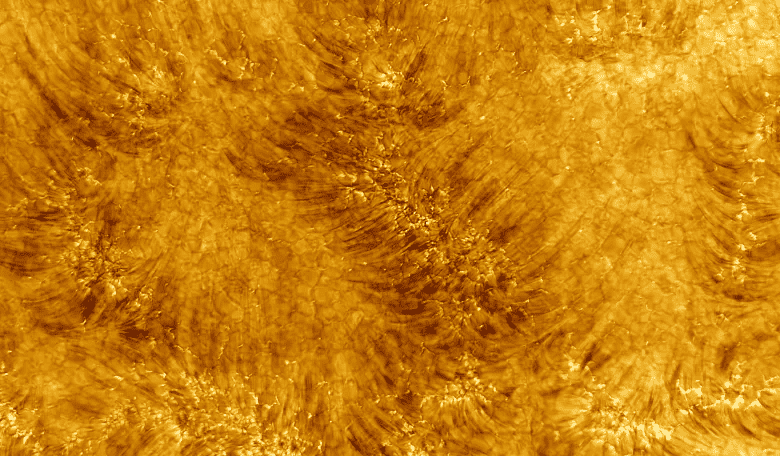The world’s most powerful solar telescope has acquired the first detailed images of the Sun’s chromosphere, the layer of its atmosphere just above its surface. And it is unlike anything we could have previously imagined.
Astronomers have published beautiful high-resolution Sun photographs to commemorate the Inouye Solar Telescope’s anniversary. According to the National Solar Observatory (NSO), these photographs depict a region 82,500 kilometers across with a resolution of 18 kilometers.
“Yesterday marked the beginning of the Inouye Solar Telescope’s 50-year journey to revolutionize our understanding of the Sun, its magnetic behavior, and its influence on Earth”, the NSO said in an official statement released on September 5.
According to the NSO, the Inouye telescope detected the Sun’s chromosphere, the second of three layers of the solar atmosphere, positioned between the inner photosphere and the outer corona. The chromosphere of the Sun appears softer, much like a shaggy rug.
Lines of burning plasma known as “spicules” in the chromosphere appear to be smooth, crystalline honey. Spicules are thin, bristly plasma bursts that cover the Sun’s surface.
Spicules erupt from the Sun’s surface at approximately 60 miles per second and can extend about 6,000 miles, according to Smithsonian Magazine. Moreover, they assist the star sustain, balance, and transport energy via its numerous zones.
“Our new results prove that spicules are formed because of flux cancellation at the lower atmosphere,” astrophysicist Dipankar Banerjee, co-author of a 2019 spicule study published in the journal Science, told Live Science, “and they also provide a good amount of energy for the heating of the upper atmosphere of the sun.”
Aside from the charred-looking surface in the image, it also shows massive solar granules roughly 1,600 kilometers across. A graphical representation of our planet has also been included in the image above to give you a sense of the size of these particles.
Since the Inouye telescope’s commissioning, it has collected data for more than 20 of the accepted scientific applications and conducted preliminary coordinated solar observations with NASA’s Parker Solar Probe and the ESA-NASA Solar Orbiter.
The observatory is the culmination of more than 25 years of work and is expected to drive solar science for decades to come.
“NSF’s Inouye Solar Telescope is the world’s most powerful solar telescope that will forever change the way we explore and understand our sun,” said NSF Director Sethuraman Panchanathan.
“Its insights will transform how our nation, and the planet, predict and prepare for events like solar storms.”

